In between the Regent’s Park and Hyde Park, two of London’s biggest parks, you can find a townhouse that was constructed by the Seymour family, the Marquesses of Hertford.
This mansion is located on Manchester Square and is known as the Hertford House. Here you can admire the family’s extensive collection of fine art, along with that of Sir Richard Wallace, 1st Baronet (1818-1890), after whom the museum was named.
The Wallace Collection was established in 1897 and features furniture, arms and armor, porcelain, and a large collection of 18th-century French paintings and paintings by the Old Masters.
Entry to the museum is free of charge, and below is a list of the paintings at the Wallace Collection that you must not miss during your visit.
1. The Swing – Jean-Honoré Fragonard
- Date created: 1767
- Dimensions: 81 × 64.2 centimeters (31.87 × 25.25 inches)
The Swing is considered to be one of the most famous Rococo paintings in history and embodies this frivolous art movement of the 18th century. It was painted by one of the leading Rococo artists at the time, Jean-Honoré Fragonard (1732-1806), and is considered to be one of his best works.
The young woman on the swing is pushed by an older man who doesn’t appear to notice the young man looking up into the girl’s billowing dress skirt. The setting is an idyllic landscape that is typical for paintings produced by French artists during this era.
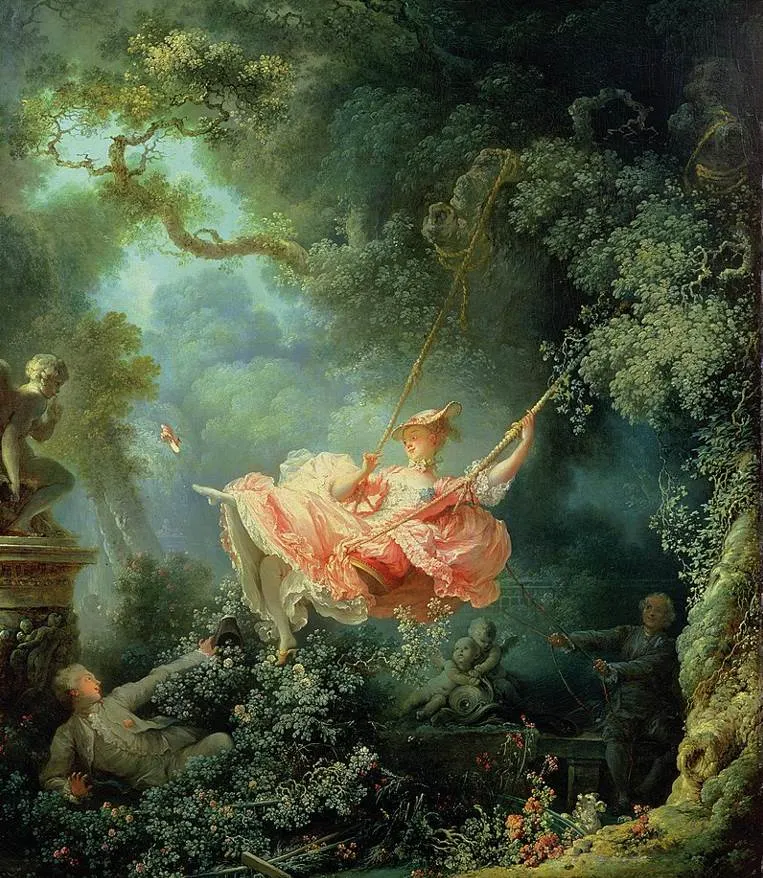
2. The Laughing Cavalier – Frans Hals
- Date created: 1624
- Dimensions: 83 × 67.3 centimeters (33 × 26.5 inches)
The Laughing Cavalier is often described as one of the most amazing portrait paintings of the Baroque era. It was painted by Dutch artist Frans Hals (1582-1666) who lived during a period in history now referred to as the Dutch Golden Age.
The title of the painting dates back to the time that it arrived in England in the late 19th century. The identity of the depicted man is unknown and although he surely displays an enigmatic smile, he isn’t laughing. It became very popular in England after it was first displayed at the Bethnal Green Museum between 1872 and 1875.

3. The Rainbow Landscape – Peter Paul Rubens
- Date created: 1636
- Dimensions: 135.6 x 235 centimeters (53.3 x 92.51 inches)
The Rainbow Landscape is one of the many landscape paintings by Peter Paul Rubens (1577-1640) that he produced during his retirement in the final decade of his life. It depicts the scene outside of the castle that he purchased called “Het Steen” (which he painted as well) and most likely decorated this mansion.

The Flemish artist and master of the Baroque era included peasants and an idyllic landscape in between the cities of Antwerp and Brussels in modern-day Belgium. Antwerp was his home city and the place where he set up his studio called the “Rubenshuis,” an opulent Renaissance building that has been transformed into a museum today.
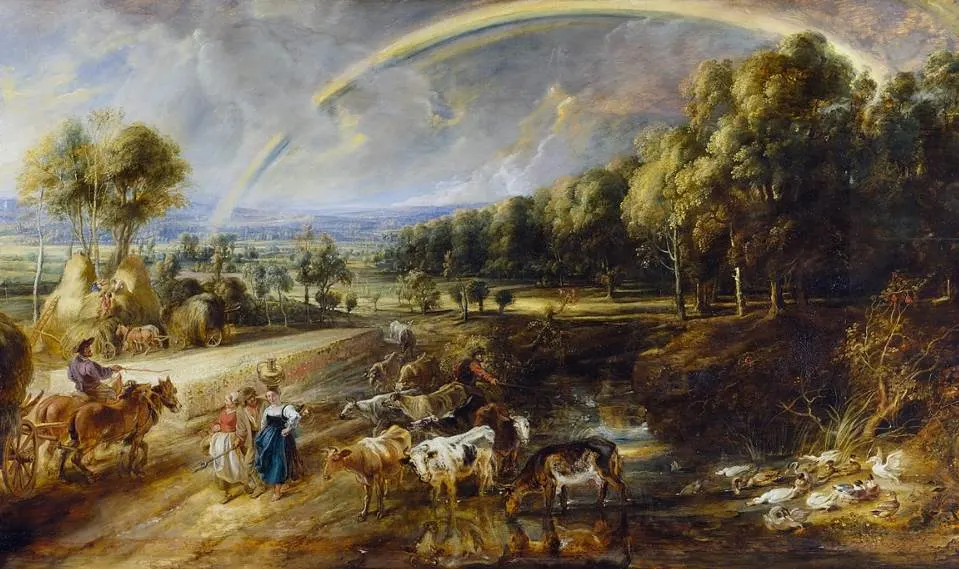
4. Perseus and Andromeda – Titian
- Date created: 1554-1556
- Dimensions: 175 × 189.5 centimeters (68.8 × 74.6 inches)
Perseus and Andromeda is one of the paintings by Titian that were commissioned by King Philip II of Spain. These works were derived from stories of Roman poet Ovid which he write in his work Metamorphoses. The Renaissance master painted 7 works in this series which all include female nudes.
This painting depicts Perseus who is flying into the air as he attempts to kill the sea monster Cetus. This monster was sent by Poseidon to kill Andromeda who is chained to a cliff. The paint g was both cut down and severely damaged by the time it was mentioned in 1605.

5. The Bacino from the Giudecca, Venice – Canaletto
- Date created: 1735-1744
- Dimensions: 129.2 x 188.9 centimeters (50.86 x 74.37 inches)
The Bacino from the Giudecca is one of the two views of Venice produced by Canaletto, the most prominent member of the 18th-century Venetian School. The other painting is known as “the Bacino di San Marco from San Giorgio Maggiore” and depicts an alternative view of the lagoon city in the northeast of Italy.
The Italian artist set up his easel in two different positions at the inner harbor of St. Mark’s in the heart of the city. Both paintings were acquired by the 1st Marquess of Hertford somewhen between 1738 and 1739, a period in history when Canaletto was already one of the most renowned artists in Venice.
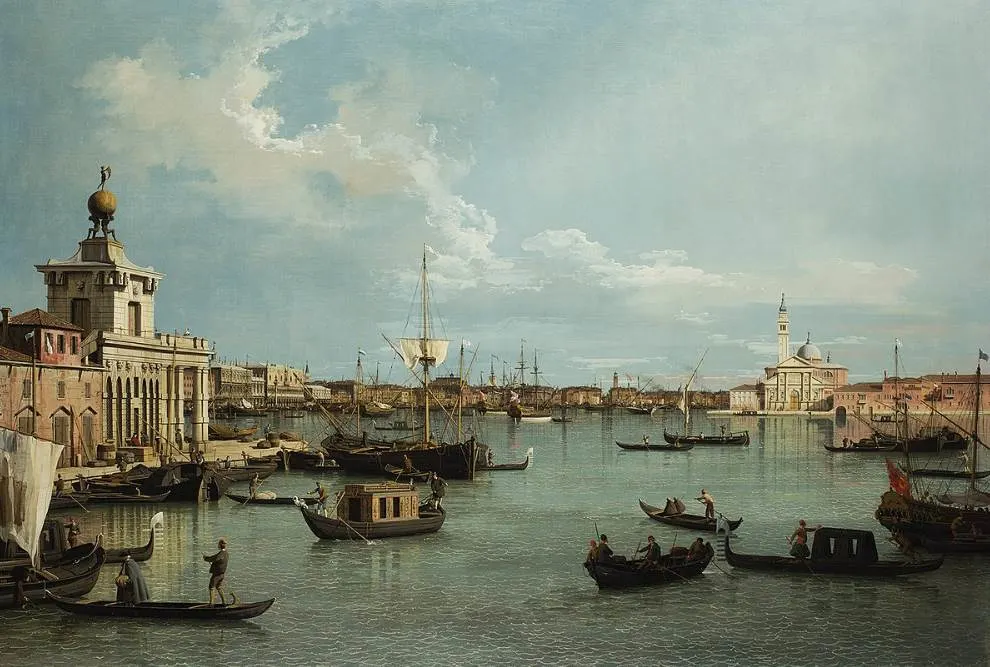
6. The Lady with a Fan – Diego Velázquez
- Date created: 1638-1639
- Dimensions: 92.8 × 68.5 centimeters (36.5 × 27 inches)
The Lady with a Fan is one of the many paintings by Diego Velázquez, the Spanish artist of the Baroque era when he was working at the Spanish Royal court. It’s an enigmatic painting of a lady wearing a black dress, a dark lace veil, and white gloves while holding a typical Spanish fan.
Most of the sitters of portraits painted by Diego Velázquez (1599-1660) have even been positively identified. This makes this work rather unique because up until today, we don’t know who the mysterious woman in this painting is. It could be Marie de Rohan, the duchess of Chevreuse (1600–1679), a French noblewoman who lived in Madrid at the time.
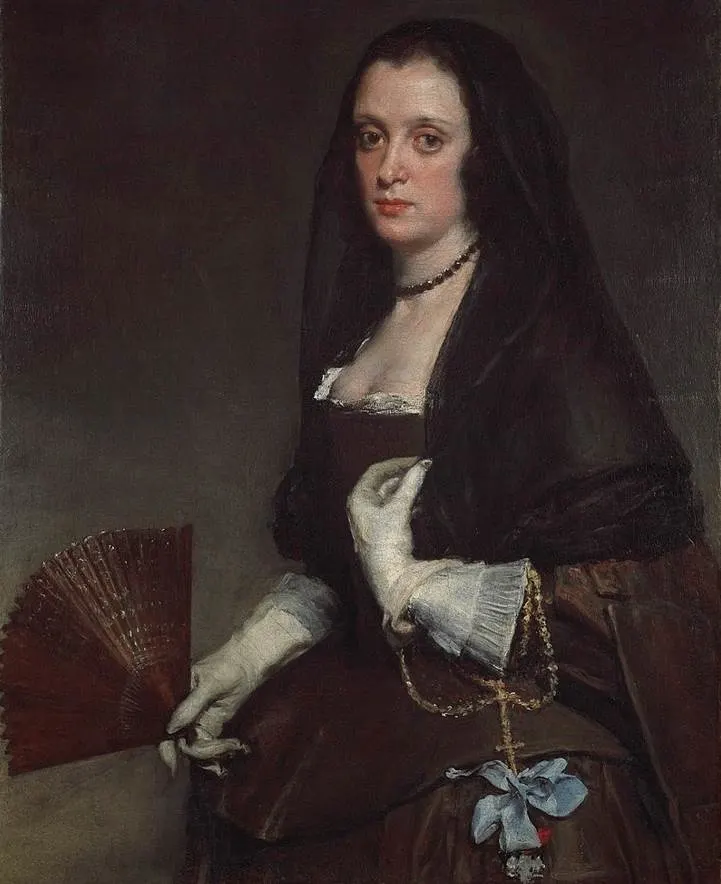
7. Titus, the Artist’s Son – Rembrandt van Rijn
- Date created: 1657
- Dimensions: 68.5 x 57.3 centimeters (26.96 x 22.55 inches)
Rembrandt van Rijn (1606-1669) is one of the greatest masters to have ever lived. He produced a large number of amazing paintings, including many self-portraits, and sometimes he painted his family members as well. Titus, the Artist’s Son, depicts Titus van Rijn (1641-1668), the only of 4 children with his first wife Saskia who survived infancy.
Another portrait of his son Titus is part of the collection of the Boijmans van Beuningen Museum in Rotterdam, the Netherlands, and was completed in 1655. The boy appears to be slightly older in this work so it has been dated around 1657. This means that the serious look on Titus’ face might have something to do with the fact that the artist was declared bankrupt that year.
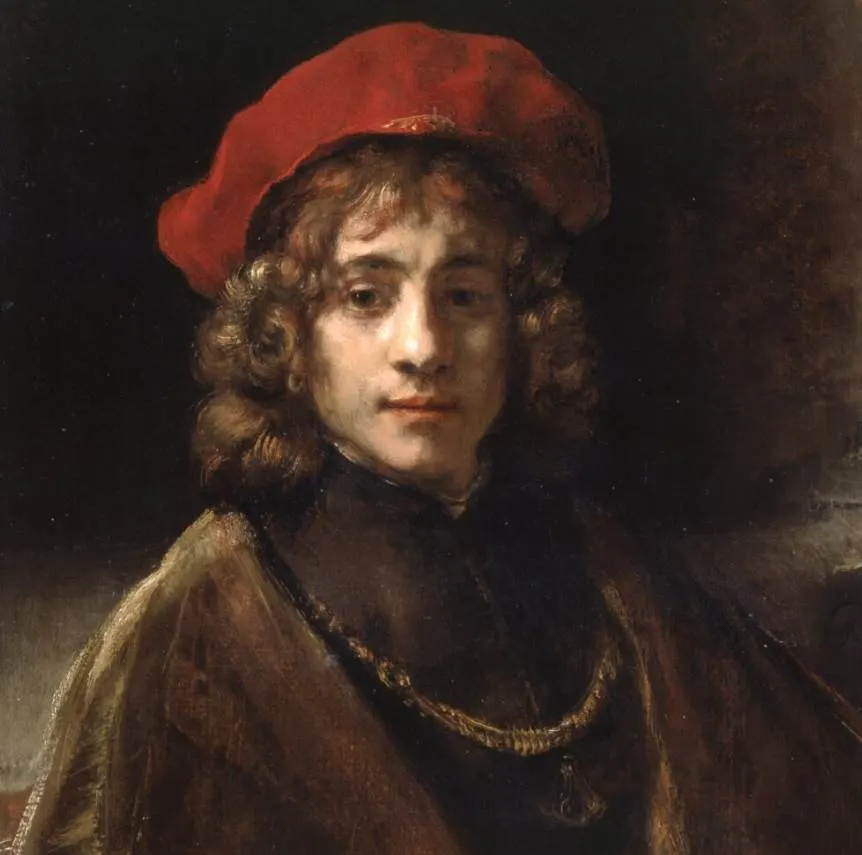
8. Mrs. Mary Robinson (Perdita) – Thomas Gainsborough
- Date created: 1781
- Dimensions: 233.7 x 153 centimeters (92 x 60.23 inches)
The portrait of Mrs. Mary Robinson (Perdita) depicts the famous actress and writer, a woman who was a real celebrity during the 18th century. She was nicknamed “Perdita” after her role in a play called “The Winter’s Tale,” a role that resulted in a notorious affair with the Prince of Wales, the future King George IV (1762-1830).
She was one of the most painted women of her time, and this painting by Thomas Gainsborough (1727-1788) is one of the most famous ones. This painting was commissioned by the Prince of Wales himself and she can be seen holding a miniature of the future King of the United Kingdom of Great Britain.

9. The Rising of the Sun – François Boucher
- Date created: 1752
- Dimensions: 378 × 261 centimeters (149 × 103 inches)
The Rising of the Sun is a huge painting by François Boucher, the French court painter during the reign of King Louis XV. He was a leading figure in the Rococo art movement and he painted a large number of paintings for Madame de Pompadour, the king’s mistress. This includes this work as well, together with its accompanying painting called “The Setting of the Sun.”
Both paintings are now part of the Wallace Collection and can be admired in London. Both works were once used as models for tapestries that were produced by the Gobelins Manufactory tapestry factory in France. The tapestries of these paintings were completed between 1754 and 1755 and once hung in the King’s bedroom.

10. A Dance to the Music of Time – Nicolas Poussin
- Date created: 1634-1636
- Dimensions: 82.5 × 104 centimeters (32.5 × 41 inches)
A Dance to the Music of Time is an allegorical painting by Nicolas Poussin (1594-1665), the leading artist of the Baroque period in France. It was commissioned during the artist’s first period in Rome by a man named Giulio Rospigliosi, the future Pope Clement IX (1600-1669).
This Poussin painting depicts 4 people who are dancing in a circle. They represent the 4 stages of human progress as they dance to an allegory of time, which is the old man playing the lire. Just like the rest of this enigmatic composition, the true identity of the 4 main figures remains uncertain until today.

